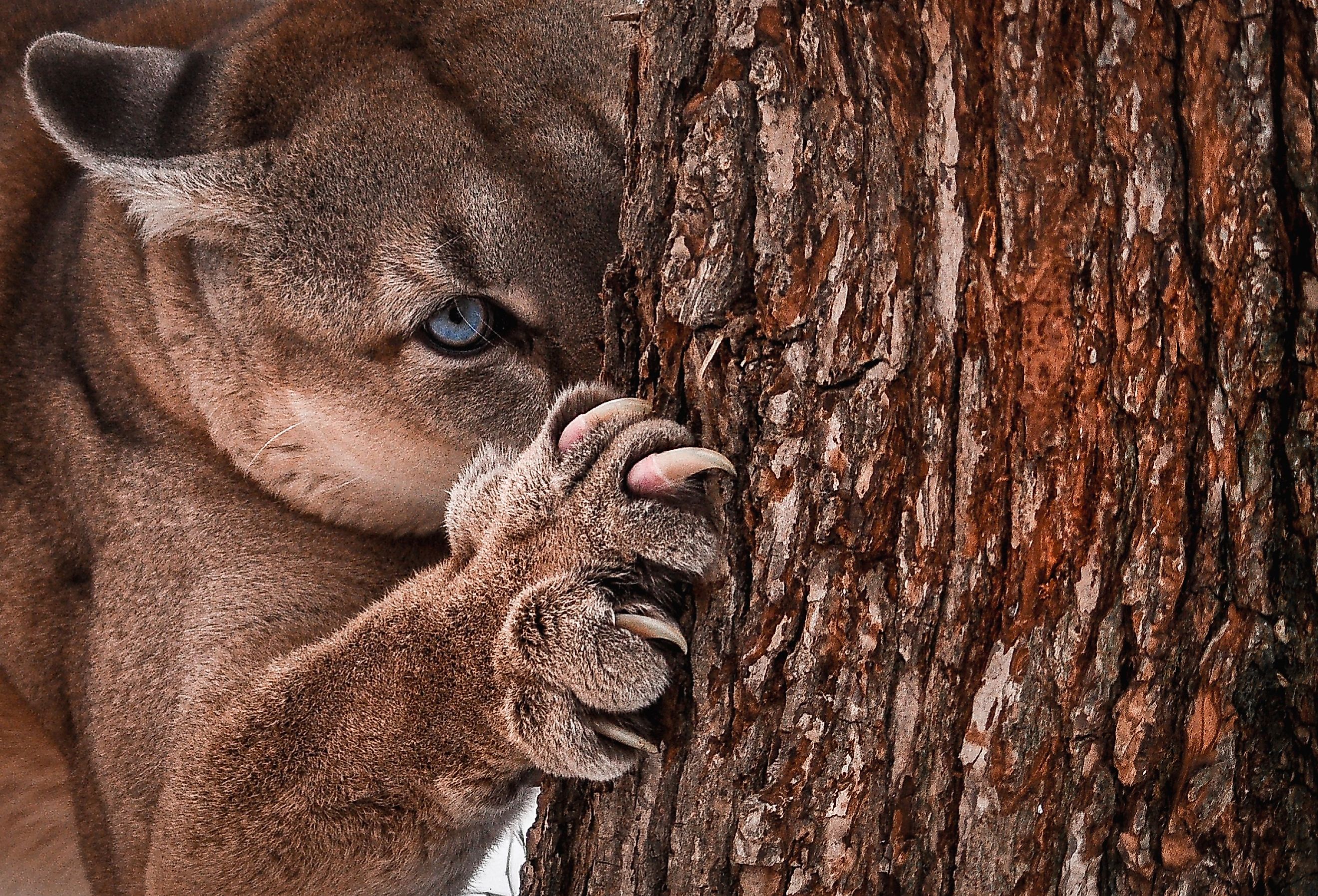
The 12 Deadliest Animals in Michigan
Michigan, the gateway to the Great Lakes and a known paradise for nature lovers (especially its Upper Peninsula or UP), is home to a diverse array of wildlife. While most animals in this state are harmless, some can pose serious threats to humans and their pets. Many are located in the more rural parts of the state, but well worth knowing by any resident or nature enthusiast passing through. Learn how to identify and prepare for some of the deadliest animals in Michigan so you are not caught unaware.
Eastern Massasauga Rattlesnake (Sistrurus catenatus)

The Eastern Massasauga Rattlesnake is the only venomous snake found in Michigan. Now endangered largely due to habitat loss, this snake resides primarily in the wetlands, grasslands, and meadows across Michigan, though its range used to extend as far east as New York and as far west as Iowa. Its bite can cause severe pain, swelling, and tissue damage, and although fatalities are rare, immediate medical attention is crucial.
The snake can be recognized by its elaborate grey and brown pattern with spots that can resemble bow ties. They are relatively short and thick, averaging 2 to 3 feet in length. To avoid encounters with the Eastern Massasauga, stay on marked trails, watch where you step, and avoid tall grass. It is also wise to wear boots and long pants when hiking in areas known for snake activity. If you see an Eastern Massasauga, do not approach. Stand clear and be mindful not to disrupt their nests.
Black Bear (Ursus americanus)
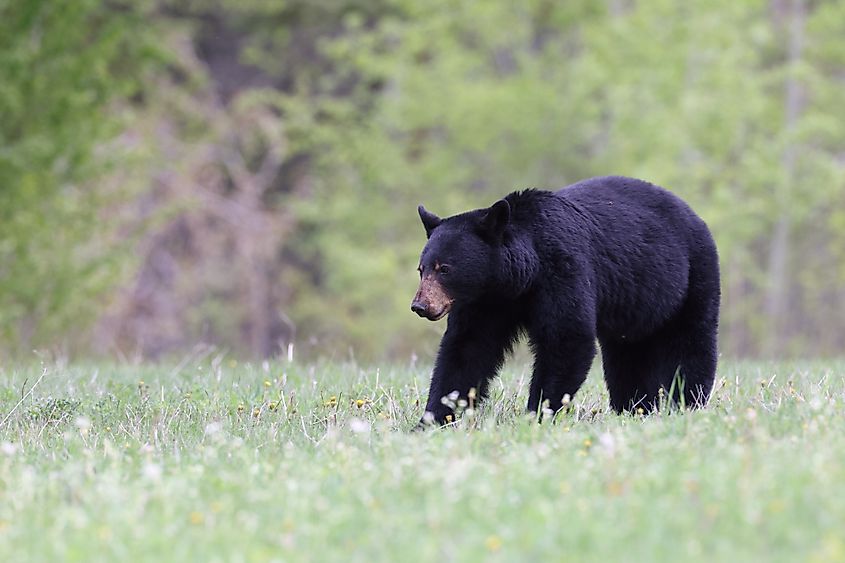
Black bears are a common sight in northern Michigan, particularly in forested areas and around the Upper Peninsula. Their coat can range from a lighter brown to the typical dark black, and these creatures can weigh up to 600 pounds in the case of males. While these bears typically avoid humans, they can become dangerous if they feel threatened, especially females with cubs. Although attacks are rare, they can be fatal, as their sharp claws and heavy bite can cause severe damage.
To minimize the risk of a bear encounter, make noise while hiking, store food securely when camping, and never approach or feed bears. If you encounter a bear, back away slowly, do not run, and make yourself appear as large as possible; standing tall, and waving your arms in the air.
Gray Wolf (Canis lupus)

Gray wolves inhabit mainly the Upper Peninsula, particularly in forested and remote regions. These wolves usually avoid humans, but they can attack if they feel threatened or are rabid, posing a significant danger due to their power and predatory nature. To keep yourself safe, it is best to hike in groups and make noise to alert wolves to your presence. Like many of the large predatory animals, they are much more of a threat to pets and livestock than humans, so make sure to adequately protect and monitor your animals, including leashing your dog on hikes. If you do encounter a wolf, do not run; instead, stand your ground and make yourself appear larger.
Anyone bitten by a potential or suspected rabid mammal should seek medical attention immediately. Do not wait for symptoms; symptomatic rabies is nearly 100% fatal.
Cougar (Puma concolor)
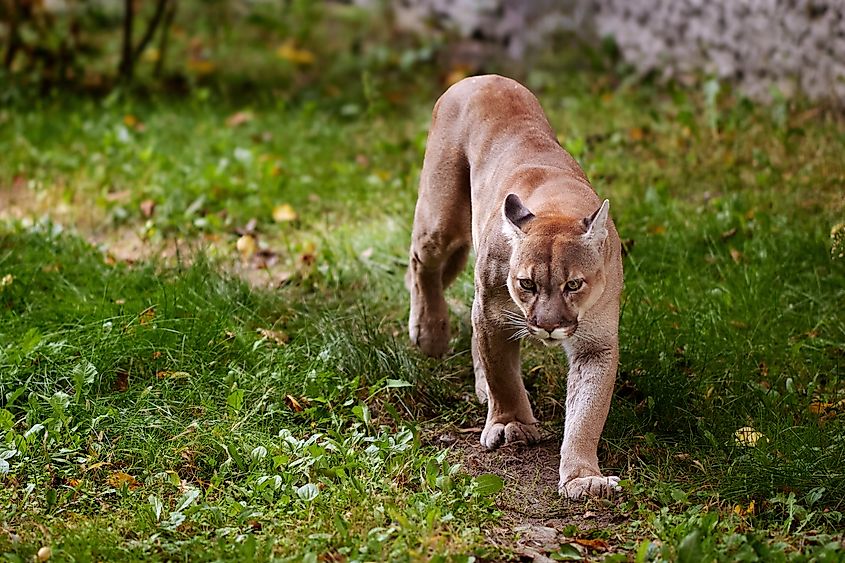
Cougars, also known as mountain lions or pumas, are rare but have been sighted in the Upper Peninsula and parts of the Lower Peninsula. These apex predators generally avoid humans but can become aggressive if they feel threatened or are defending their young or territory. They sport a fearsome bite and sharp claws that could easily prove fatal to pets and humans alike, and their hunting style makes them very difficult to detect in the wild.
To avoid cougar encounters, hike in groups, keep children and pets close, and don't run if you see a cougar. Instead, as with grey wolves and black bears, make yourself appear larger and back away slowly. Chances are good the cougar will simply stay out of sight, but it's best to always be vigilant.
Coyotes (Canis latrans)
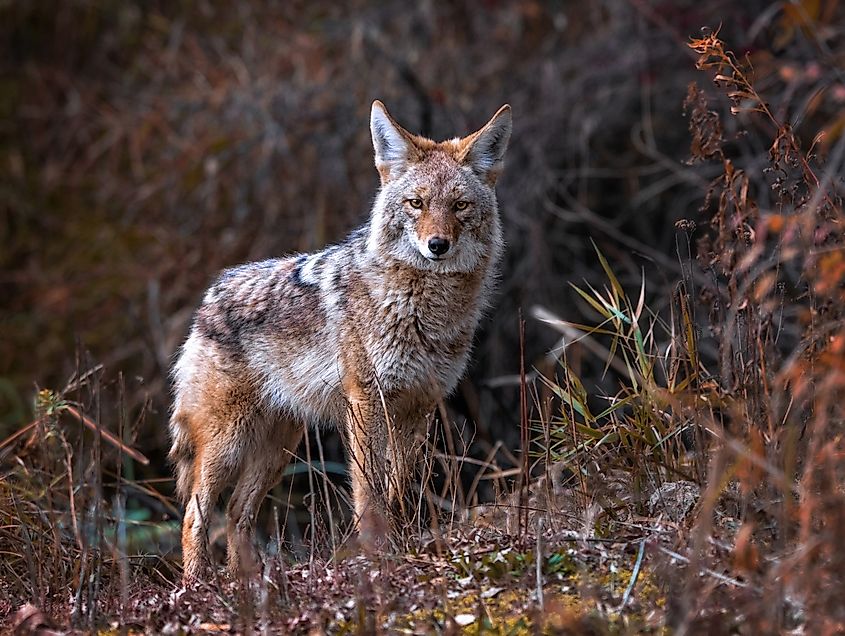
Coyotes are widespread throughout Michigan, found in both rural and suburban areas. While attacks on humans are rare, coyotes can become aggressive, especially if they are rabid or protect their young. They pose a significant threat to pets, particularly smaller pets left outside unattended.
To steer clear of coyote encounters, secure trash and food sources, keep pets indoors or on a leash, and never approach or feed coyotes. If you encounter a coyote, make loud noises to scare it away. If it is acting erratically or aggressively in the daylight, it might be rabid, and it is imperative to call animal control as it poses a threat to the area.
Black Widow (Latrodectus variolus)

Unfortunately, Michigan is also home to the northern black widow spider (Latrodectus mactans), which inhabits dark, undisturbed areas like woodpiles and basements. The northern black widow is most prominent in the western Lower Peninsula. Its venom is neurotoxic, causing severe pain, muscle cramps, and, in rare cases, death, particularly in young children or the elderly.
To avoid black widow bites, wear gloves when handling firewood or working in dark areas, check shoes and bedding, and keep living spaces clean and free of spider webs. If camping, scan your tent’s top for spiders before folding it up to avoid an unpleasant surprise.
Brown Recluse Spider (Loxosceles reclusa)
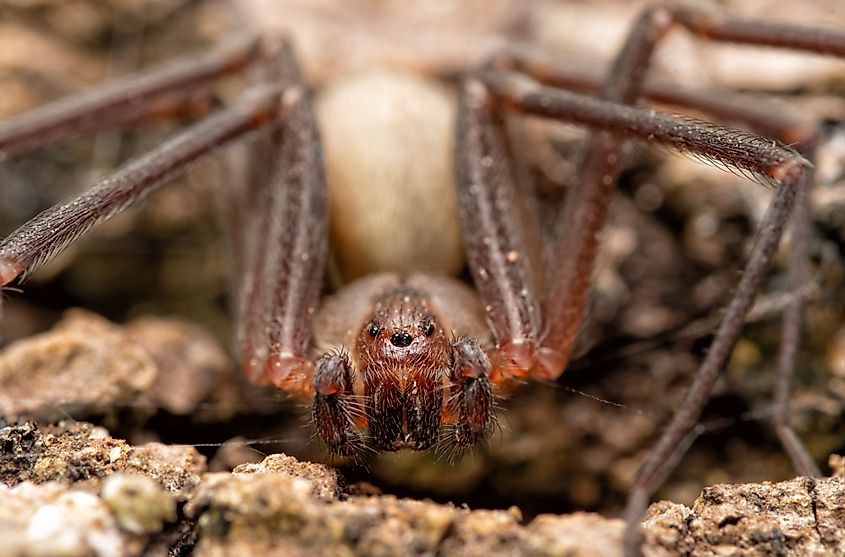
The Brown Recluse Spider occasionally appears in southern Michigan, especially in secluded, undisturbed indoor areas, similar to black widows. However, due to its relative lack of distinctive markings, it can be more difficult to identify than other harmless brown spiders. Its bite can cause severe skin necrosis, affect entire organ systems, and, in rare cases, death.
To circumvent brown recluse bites, keep storage areas clean and free of clutter, shake out clothes and shoes before wearing them, and use sticky traps to monitor spider activity. Wear gloves when doing yard work or work in a shed.
American Toad (Anaxyrus americanus)
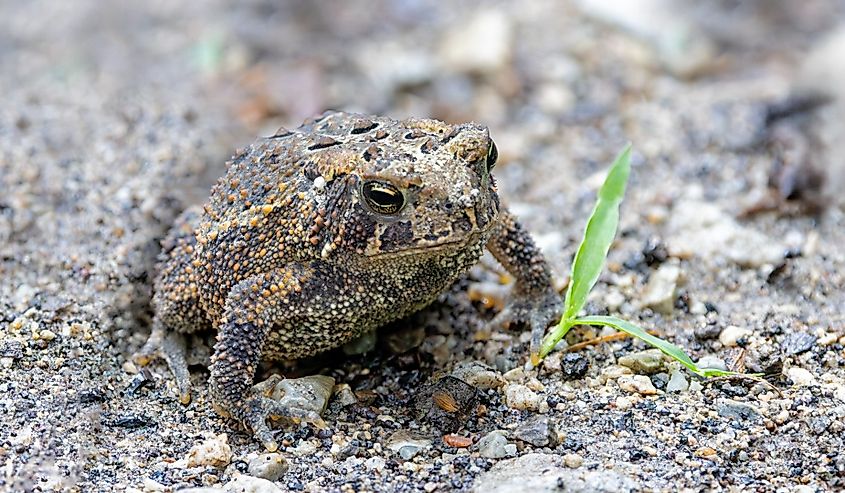
The American toad hardly strikes fear into the hearts of humans, but ingesting them can prove deadly to pets. These warty toads can grow up to four inches long and sport brown and gray spots. They are the perfect size for a curious dog to want to eat, but they secrete a poisonous toxin from their skin as a defense mechanism that can cause pets to vomit if not have cardiac complications.
Found mostly in gardens and forests, this toad is best avoided by staying vigilant with pets outside and seeking veterinary assistance if any adverse symptoms develop after an encounter with a toad. While the poison is only harmful if ingested, you also want to avoid touching these toads.
Ticks (Ixodida)
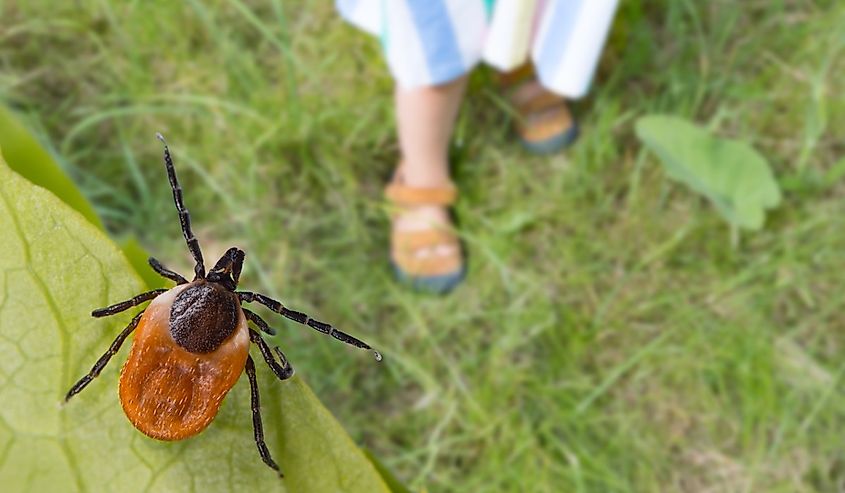
While small, ticks are vectors to some incredibly serious illnesses. Multiple species of ticks are prevalent throughout Michigan, especially in grassy, wooded, and bushy areas. They can transmit Lyme disease, Rocky Mountain spotted fever, and other serious illnesses through their bites.
To prevent tick bites, use insect repellent, wear long sleeves and pants while outdoors, perform tick checks after outdoor activities, and remove ticks promptly with tweezers. Be especially vigilant in long grass, where ticks will wait for wildlife (or humans) to brush by them.
Mosquitoes (Culicidae)
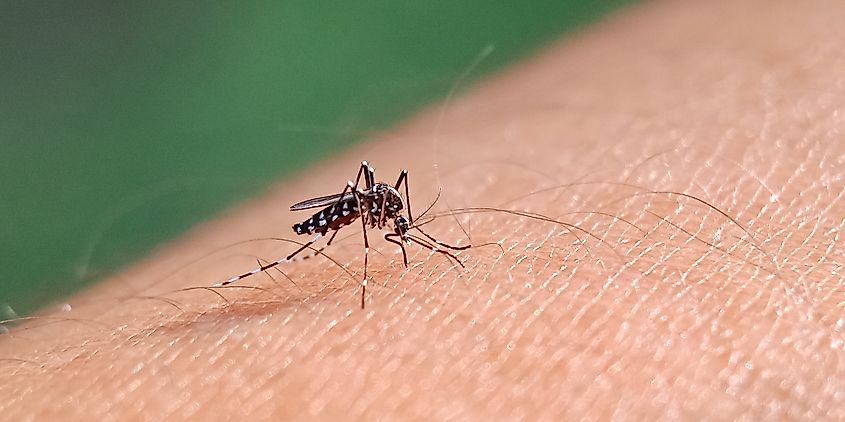
Known for their annoying wine and itchy bites, mosquitoes are abundant across Michigan, particularly near standing or still water, like puddles, ponds, and pools. They can carry and transmit diseases such as West Nile virus and Eastern Equine Encephalitis. Most prevalent around dawn and dusk, mosquitos require stagnant water to breed. Be sure to drain or eliminate any standing water on your property and consider burning citronella candles or torches to deter mosquitos outside.
Additionally, use insect repellent, wear protective clothing, and use mosquito nets or screens.
Fowler’s Toad (Anaxyrus fowleri)
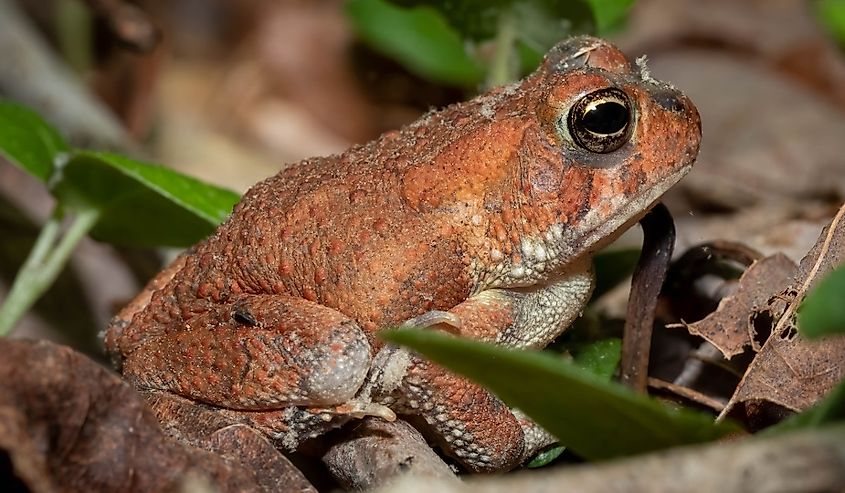
Though not deadly, the Fowler’s toad is an amphibian that one should not pick up. Found in most of southern Michigan, this toad is brown, spotty (with more bumps than the American toad), and very easily camouflaged under leaves and near water. Besides camouflage, another defense mechanism of the Fowler’s Toad is a poisonous secretion that involves bufadienolides, which in large doses can affect the cardiovascular system. Should a dog bite this toad, take it to the vet immediately. While all toads are poisonous, these toads pose a serious threat to pets.
Moose (Alces alces)
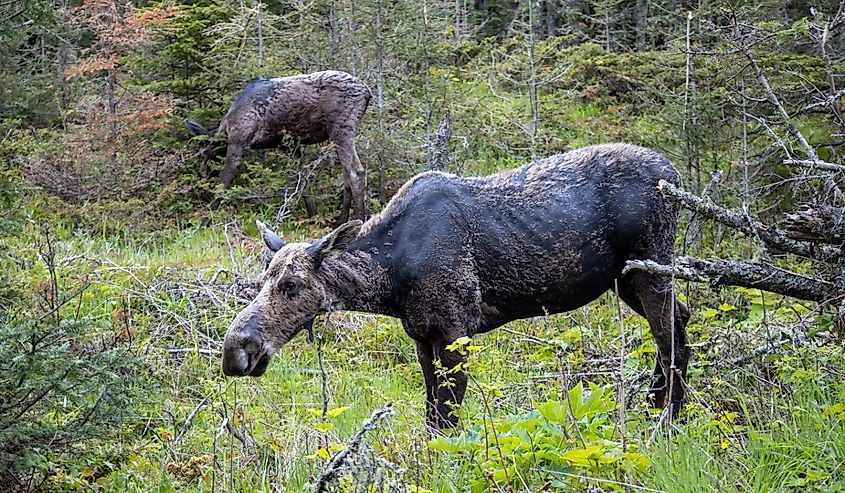
How can an herbivore be deadly? Well, for the moose, their danger comes from encountering cars or even an unfortunate hunter in the wild. Moose become aggressive if threatened, especially during their mating season in the fall. Because they weigh over 1,000 pounds and sport huge antlers, these gentle giants can kill by goring or by simply being in the way of a car. Moose are typically found only on Michigan's Upper Peninsula and in wildlife refuges. Hence, the likelihood of encountering one on the road is relatively slim, but it's best to stay vigilant while driving, particularly at dawn and dusk. Never approach a moose; instead, put a large object like a tree between you and the moose, and stay away if you see a calf nearby.
Michigan is a sprawling state full of incredible natural beauty and stunning wildlife, but it is important to remain vigilant and avoid dangers. Many of these animals can kill a pet, and several are also deadly to humans. However, with adequate knowledge and preparation, as well as a healthy respect for Mother Nature, one can enjoy the beauty of "Pure Michigan" while avoiding these dangerous creatures and keeping you and your pets safe. Be vigilant, be cautious, and be smart about nature.











